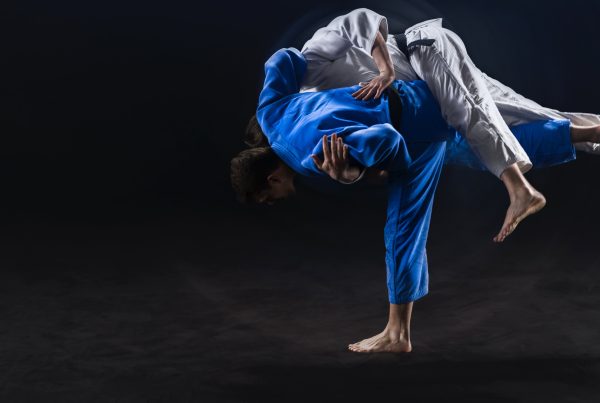A few months ago, I was asked by Chris Lukassen to pen the foreword to his upcoming management book, Balance, about the applicability of judo principles to leadership and management. The book was officially published today and I share here the full text of my foreword, with Chris’ permission. My involvement with this project is strictly pro bono.
“Judo is more than an art of attack and defense. It is a way of life.”
— Jigoro Kano, founder of judo
Far from the dryness of many management books, Chris Lukassen’s wonderful little “Balance: Growing Product Leaders” takes the form of an educational story, a parable. You are about to go on a journey with Steve – father, husband, martial artist, and product director – as he moves between his home, his children’s judo school, and his workplace; learning important lessons along the way from all three and becoming a better leader as the story unfolds. In the process, you will be taken through important leadership concepts such as purpose, individual and team discipline, values, balance, accountability, and many more.
The opportunity to encounter new and interesting ideas, and to learn how you can apply them to your life and your work, is one of the great appeals of this book and I suspect it will be a source of delight for many. So, let’s start where many of the key insights will originate: the dojo.
For many readers, it will be their first time stepping into a martial arts dojo. But what exactly is a dojo? The dojo, quite simply, is where martial arts are taught and learned. It is a physical place, but there is much more to it than that. The founder of Judo, Jigoro Kano, referred to the dojo as “a place of enlightenment… to which people come to perfect body and mind.” [1] This is very fitting.
While it may be surprising to some, the dojo, where people can be seen sparring vigorously with each other, is an extremely safe place. This is absolutely critical because the techniques practiced in the dojo would be very dangerous if they were not practiced under the right conditions. When safety is potentially at risk, the stakes are always high.
Kano Shihan was very clear about the importance of safety and left specific instructions regarding the importance of ensuring that there be no sharp corners or dangerous obstructions, and that the tatami mats that absorb the impact of falls be properly laid out and maintained. [2] Yet safety in a dojo goes far beyond the physical surroundings. It is the result of culture – the mutual responsibility that judokas take at all times for each other’s physical, mental and emotional wellbeing.
When I step into the dojo, I know that I am surrounded by people who have my best interest at heart. Senseis and senior students look out for less experienced judokas, making sure that they are given the opportunity to learn and grow. Students are taught technical skills, but acquire through regular practice values such as a Courage, Respect, Self-control, and Friendship. Judo is about more than waza, technique. It’s about developing better human beings who can contribute positively to society. [3]
The great paradox of a martial art like judo lies in the transmutation of vigorous opposition into true collaboration and friendship. The person I am fighting is not my enemy. It is my trusted uke – the valued partner without whom I could not grow and develop. That is why students are reminded that in randori, or sparring, there are no winners and no losers: we are all there to learn and help others learn, so partners adjust the intensity of their attacks and defense to the capabilities of their partner. One of the great insights of judo is that the best outcomes in the dojo and beyond come from combining Maximum Effeciency and Mutual Benefit.
Outside of the dojo, Amy Edmonston’s work on psychological safety, together with research conducted by Google and known as Project Aristotle, have highlighted that psychological safety is one of the most important, if not the most important, factor in team performance. [4] “Team psychological safety”, writes Amy Gallo, “is a shared belief held by members of a team that it’s OK to take risks, to express their ideas and concerns, to speak up with questions, and to admit mistakes — all without fear of negative consequences.” [5] Supporting a psychologically safe environment is one of the most important things that a leader can do to unlock their team’s performance, but it is not the leader’s responsibility alone. As in a dojo, it is a responsibility shared by everyone.
That so many lessons can be learned from life in a dojo no longer surprises me, but it never ceases to amaze me. Traditional martials arts, after all, have been referred to as “systems of embodied wisdom”. [6] As I have progressed through my own careers as a corporate executive, then as a management consultant, I have learned the incredible value of bringing the teachings of judo into everything I do. I believe it has made me a better business partner, a better leader, a better coach, a better person.
As you follow Steve through his own journey, you will get to know a warm and caring leader who is not afraid to acknowledge his own shortcomings, to courageously challenge his superiors, to firmly but respectfully confront under-performing employees, and to let go of dead-end strategies. With him, you will get to discover some of the best lessons that judo has to offer, and how leaders at all levels of seniority can apply them to generate maximum results. Time to start your learning journey!
Bernard Letendre, Sandan
Technical Director, University of Toronto Judo Club
References
1. Kano, Jigoro. Kodokan Judo. Kodansha America Inc., New York, 1986, 264 pages, p. 26
2. Id.
3. Kano, Jigoro. Mind Over Muscle: Writings From the Founder of Judo. Kodansha International, Tokyo, 2005, 155 pages, pp. 98-99.
4. Gallo, Amy. What is Psychological Safety? Harvard Business Review, February 15, 2023.
5. Id.
6. Holt, Jason.nbsp;Physical Philosophy: Martial Arts as Embodied Wisdom. Philosophies, 2023, 8(1), 14. https://doi.org/10.3390/philosophies8010014



